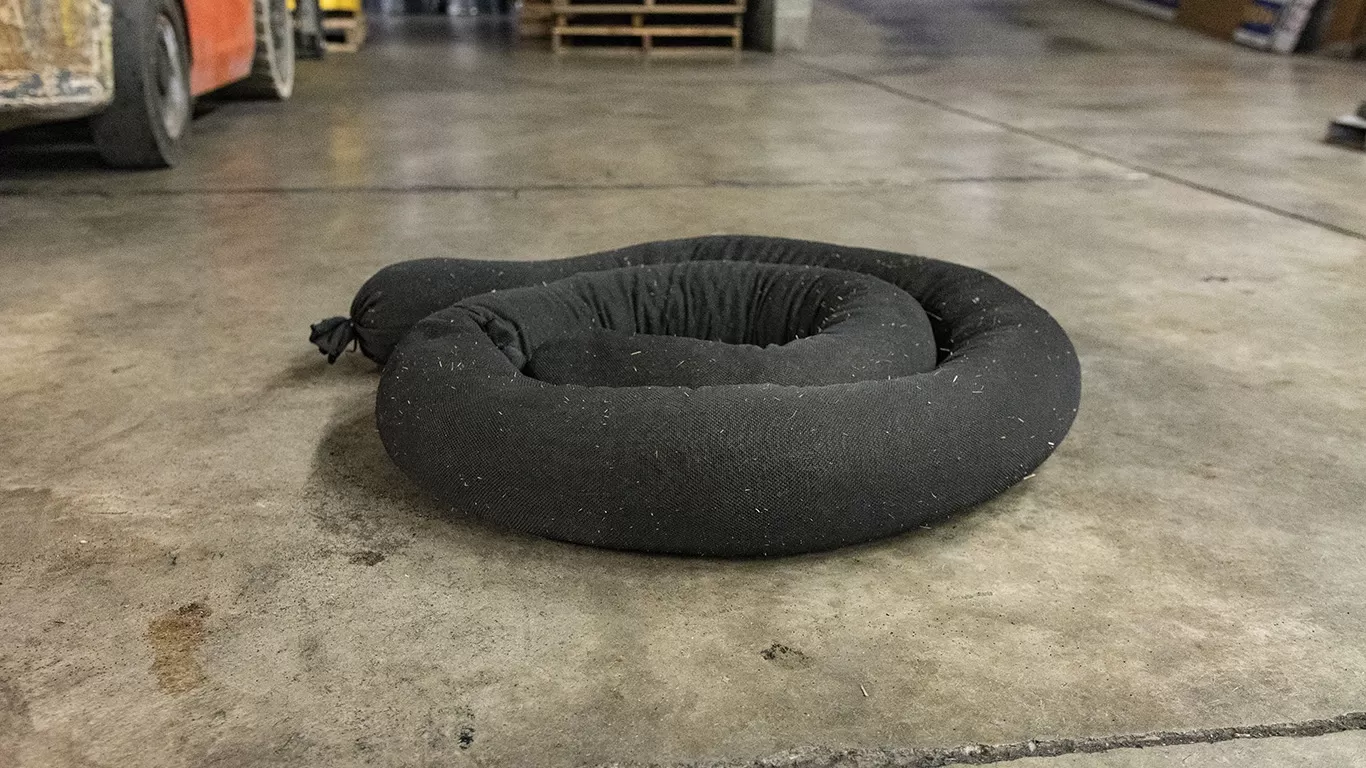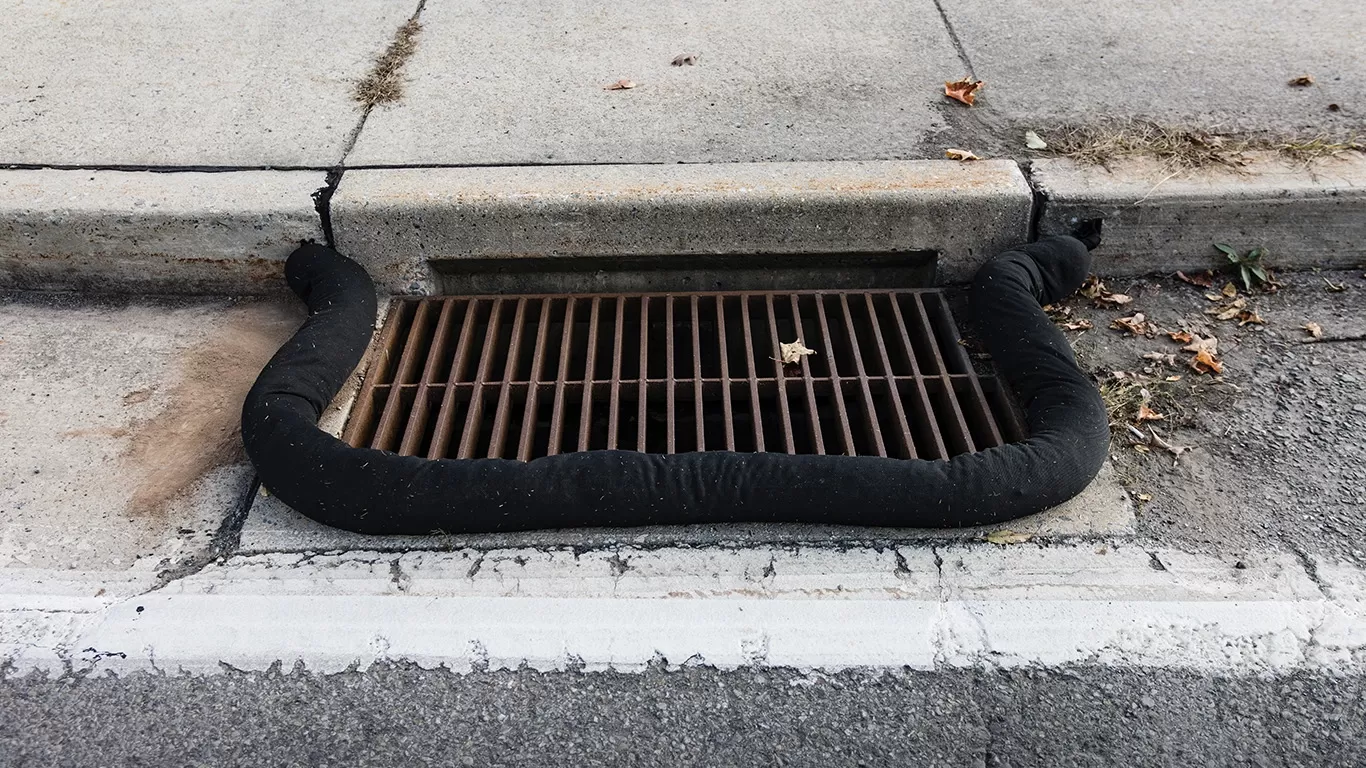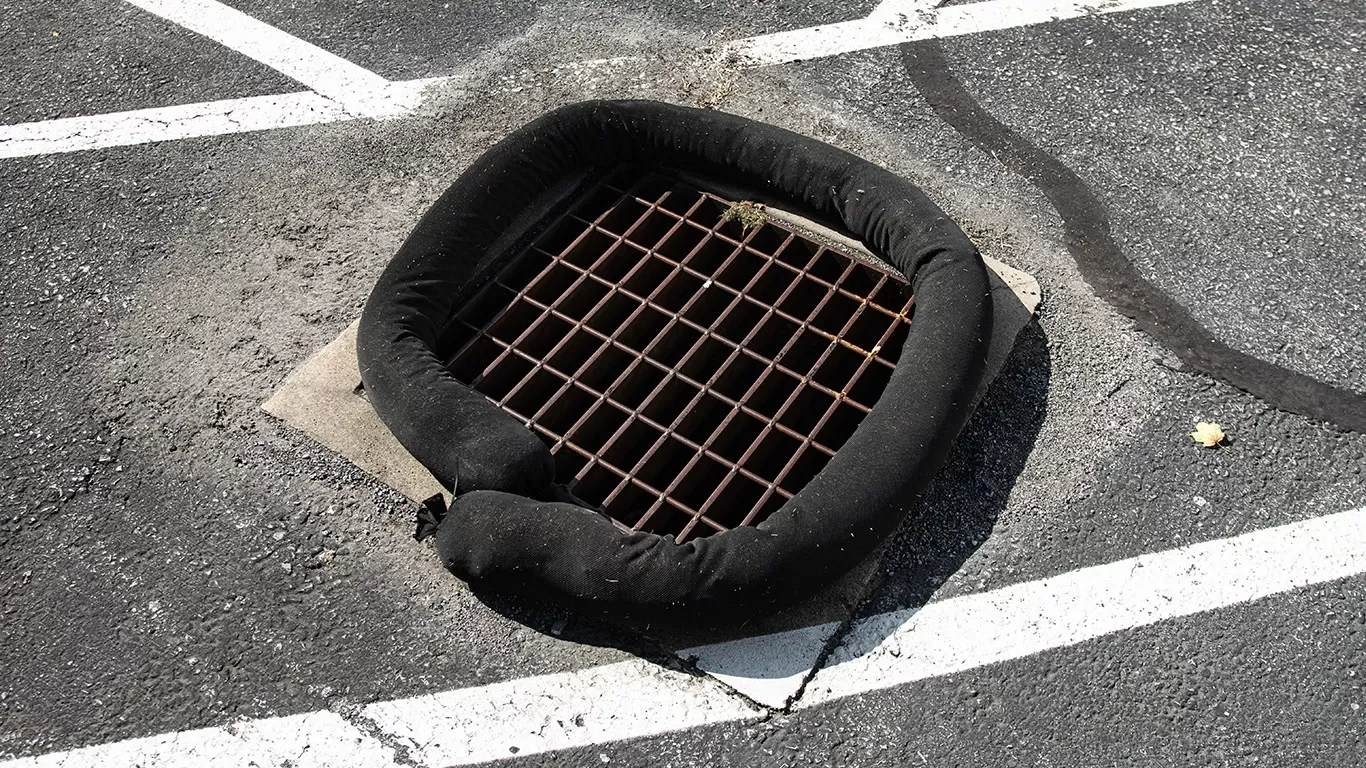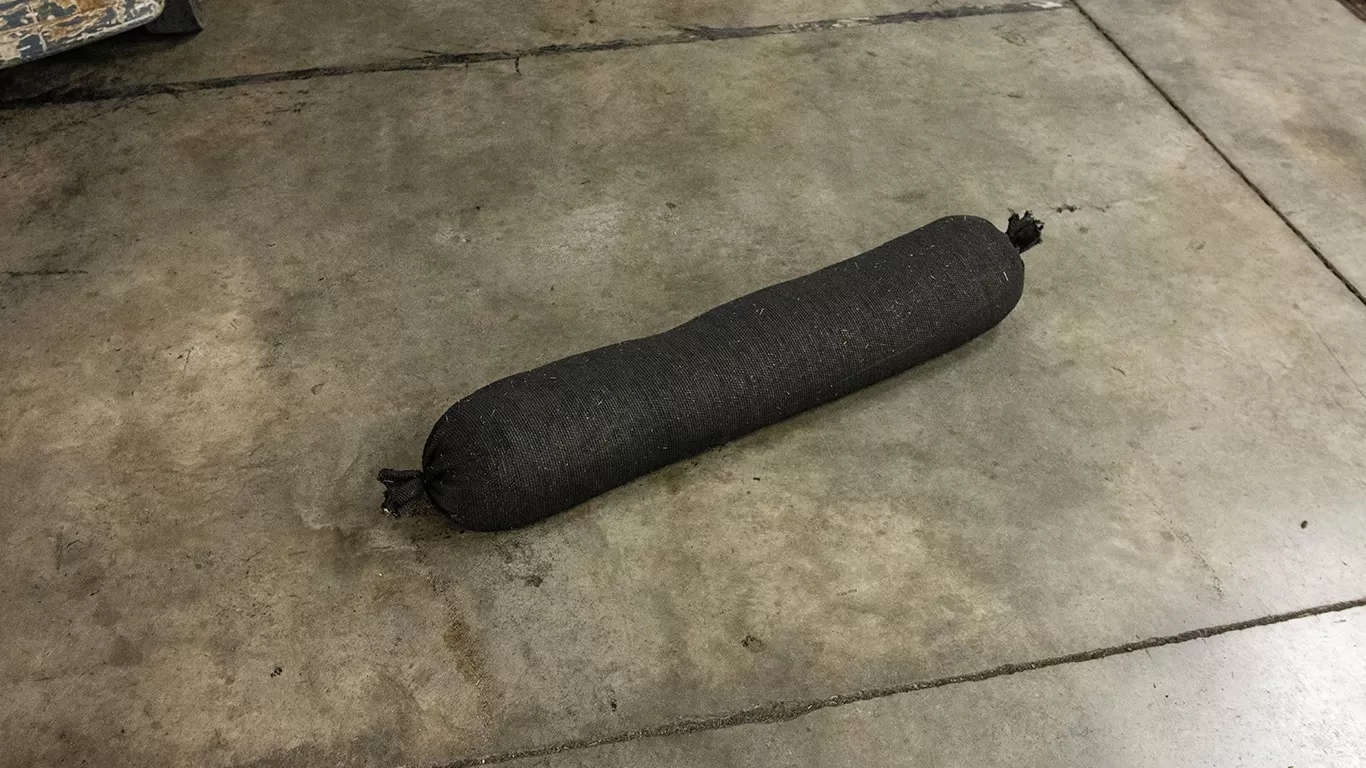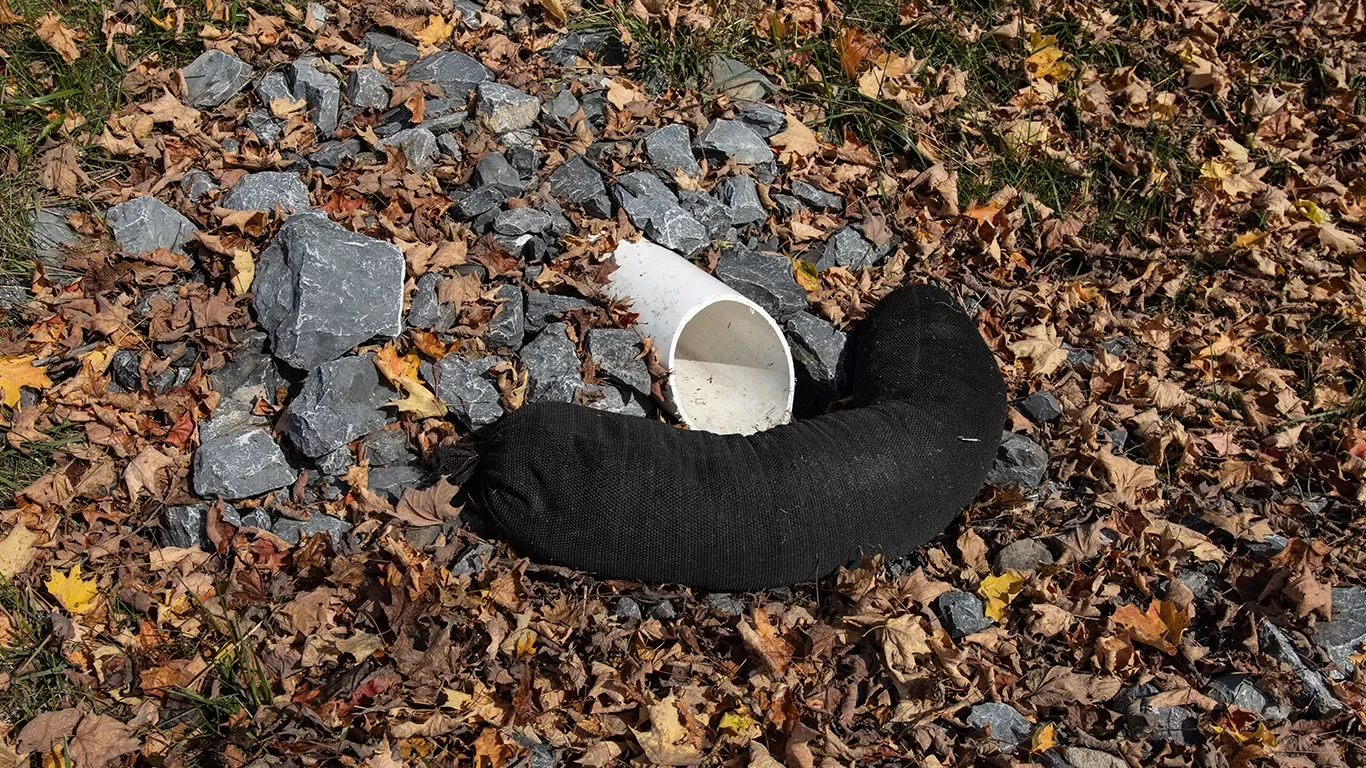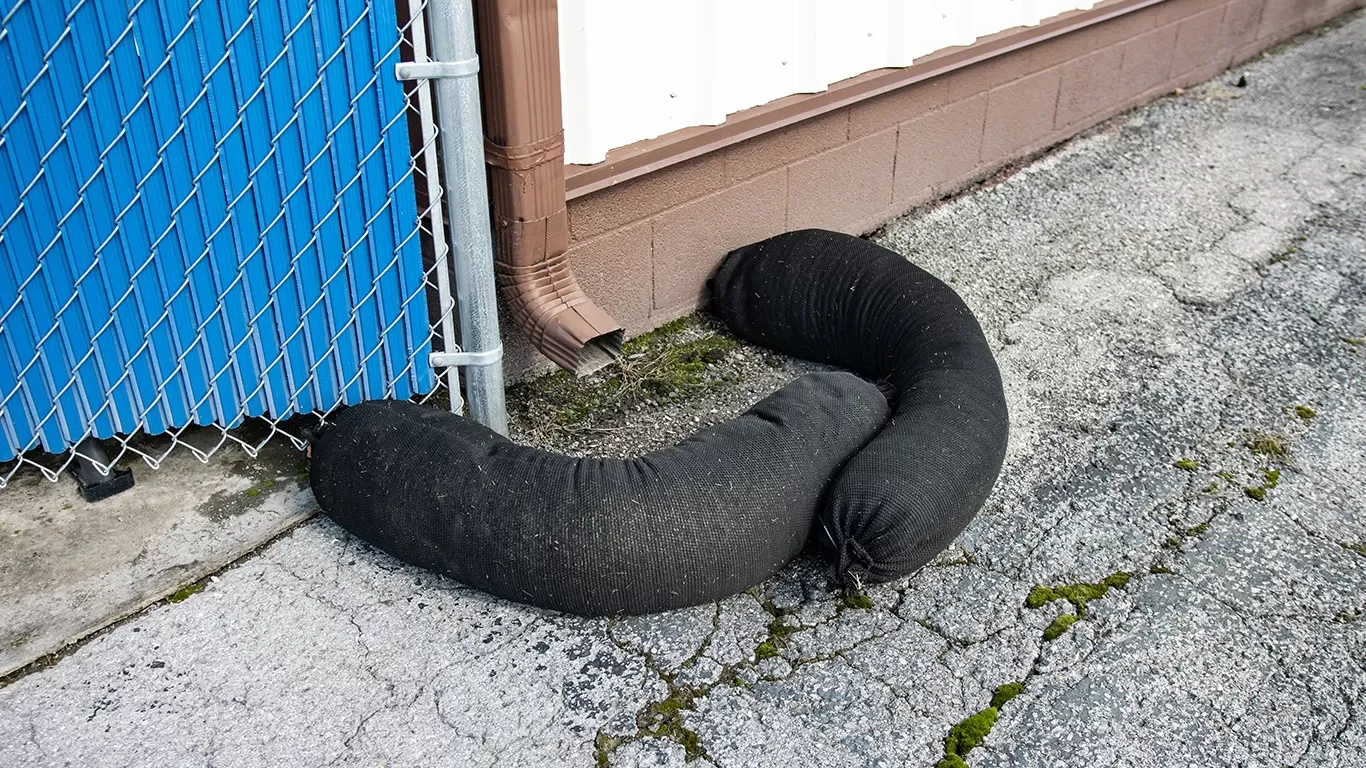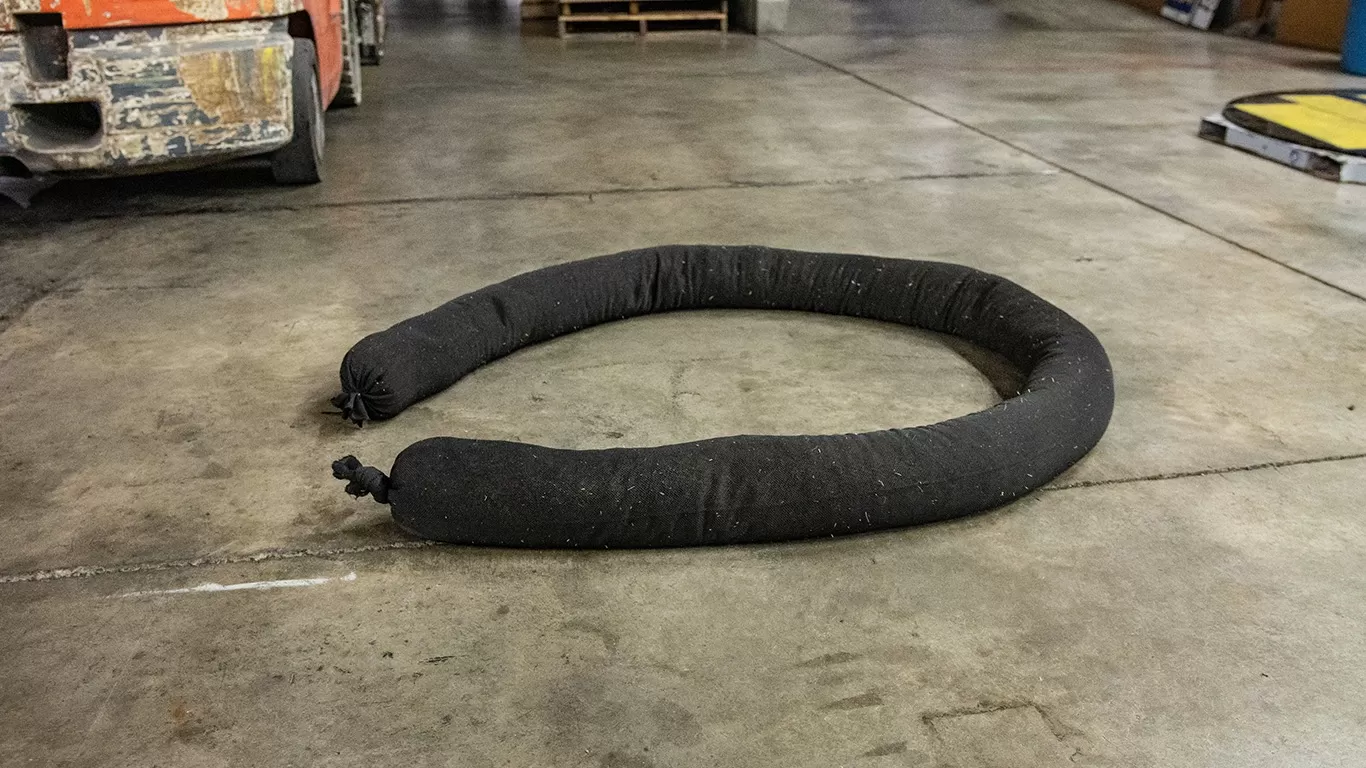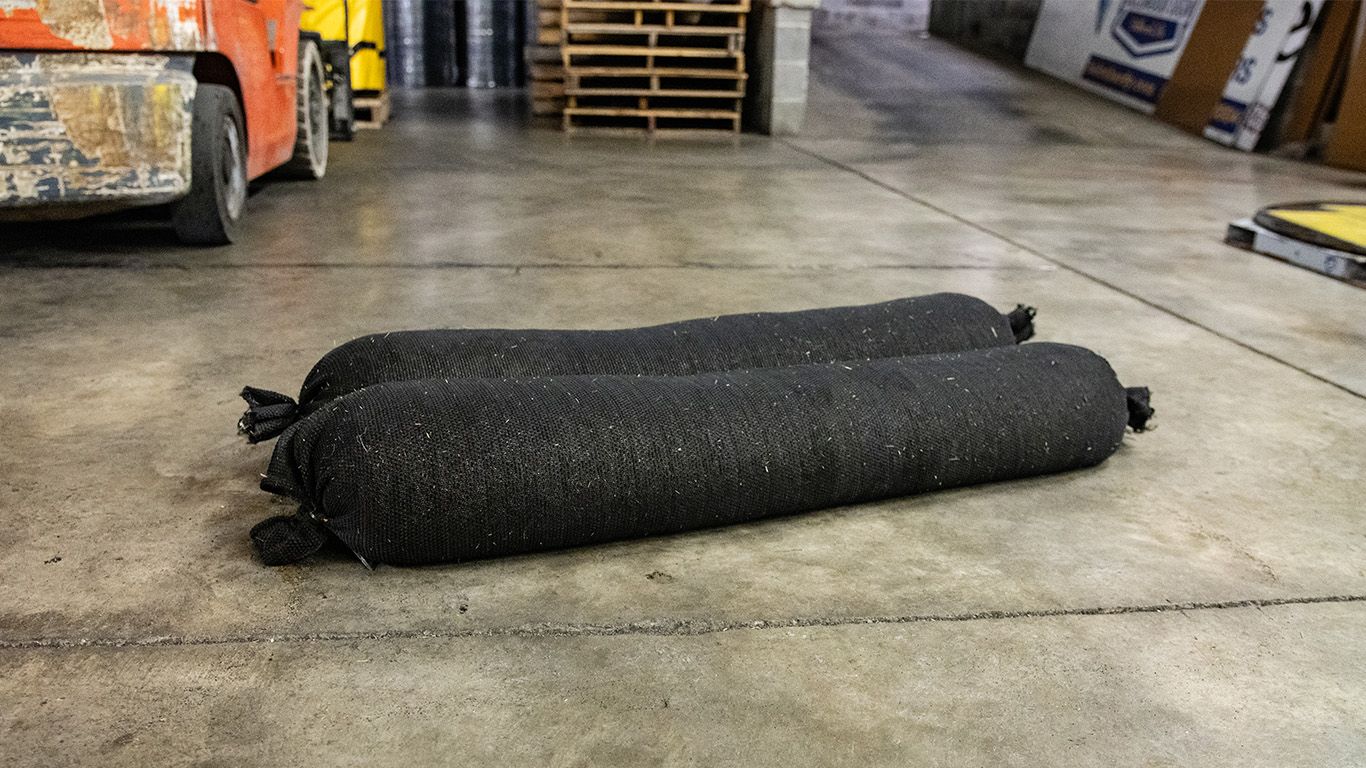
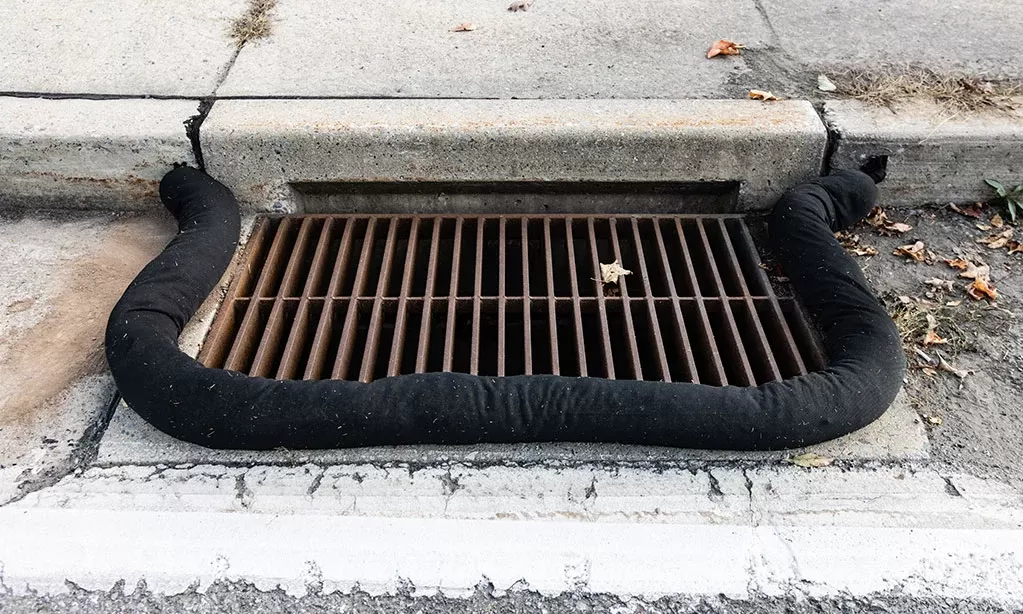
Optimize Pollutant Capture of Construction Site Stormwater Runoff
Since the turn of the 21st century, Compost Filter Socks (CFS) have quietly guarded perimeters and surrounded water inlets at construction sites. As a highly-proven and now well-established best management practice, CFS treat sheet flow, rain and snowmelt to significantly reduce the amount of stormwater pollutants that leave a job site.
Also known as “silt socks,” CFS have replaced silt fences for a majority of construction projects because of their greater pollutant capture rates, cost savings and reduction in installation time over silt fences.
Compost filled socks are a combination of compost and other materials, encased in a tubular mesh skin. They work by slowing down stormwater runoff, giving sediment time to settle out while the stormwater filters through the sock.
Although many CFS look similar, what is under the skin can truly make a difference when it comes to capturing pollutants – especially pollutants other than sediment. Even the type of compost used in a sock affects flow rates, efficacy and longevity.
Compost Considerations
When CFS were first developed, the compost in the socks was carefully selected from mature stock and sanitized to help ensure that socks would have consistent results for capturing sediment in stormwater runoff. Although compost is abundant; mature, sanitized compost is a more finite resource. This meant that over time, socks began to be filled with any available compost, which then meant that even if you purchased all of your CFS from the same supplier, you could end up with widely varying results.
Variety in compost can also lead to CFS that have widely varying weights, strong odors, and socks that just don’t last very long in the field. Some socks have even been known to grow mushrooms or feedstock grains while in storage and in the field. Variable compost also affects sediment retention rates.
A new alternative to compost is chopped switchgrass. It is abundant, provides a consistent, stable organic stock and is lighter than compost. That means that up to 36% more footage can fit on pallets, and it’s easier for employees to install. It also helps to ensure that sediment removal rates have less variability.
Heavy Metals Capture
Scrap metal recycling, manufacturing processes, fertilizers, mine tailings, sludges and pesticides can all contribute to heavy metal discharges in stormwater. Heavy metals create pollution problems because they are highly soluble in water and accumulate in water bodies where they are absorbed or digested by fish and aquatic organisms.
When CFS were first introduced, the principal focus was sediment retention. Over time, the socks became a great resource for capturing other pollutants as well. Blending carbon-based additives with compost can reduce heavy metal discharges by up to 71%.
BioChar is one of the common additives for heavy metal capture. However, like compost, there can be a lot of variety, from powders to large blocks. Carbon content – which is essential for capturing dissolved metals – also varies. Testing proves that large chunk, hardwood BioChar that has at least 80% carbon content provides longevity in the field with the ability to continue removing pollutants over time.
The addition of re-activated charcoal is another proven method for capturing heavy metals and other organic pollutants. Re-activated charcoal is recycled activated carbon that has been rebaked to bring it back to at least 95% effectiveness. This process is less labor and energy intensive than making virgin activated charcoal, and produces a viable product from what would otherwise be waste.
The addition of BioChar, activated charcoal and re-activated charcoal are all recognized methods for heavy metal and organic pollutant capture in stormwater. Continued research into pollutant capture has uncovered another additive: calcium silicate aggregate (CSA). This inert, fine-grain powder increases pH, which helps to precipitate heavy metals and enable their capture in carbon.
Optimizing Pollutant Capture in CFS
Capturing water pollutants on land – before they enter streams, rivers and other bodies of water can sometimes seem burdensome. But it is easier than trying to capture it once it has reached water. Products to control pollutants at perimeters and inlets continue to evolve to meet the ever-changing limits set by state and federal regulators.
Choosing high-quality CFS will help ensure more consistent pollutant removal, with easier installation and fewer changeouts. So you can focus on getting the job done.
The efficacy of Compost Filter Socks has been widely studied by multiple Universities and Government Agencies. A US Department of Agriculture study found that CFS reduced the discharge of:
-
Clay and silt by 65%
-
Bacteria by 75%
-
Heavy metals by 37 to 71%
-
Petroleum Hydrocarbons by 43 to 84%
Advancing Compost Filter Sock Technology
Recent innovations in compost filter socks are addressing some of the biggest challenges in stormwater management—bringing improved pollutant capture, durability, and ease of use to the forefront. One such advancement is Stormtration™ Char21™ technology, which integrates sustainable materials like chopped switchgrass and additives such as BioChar, re-activated charcoal, and calcium silicate aggregate. These components provide consistent pollutant removal, lighter weight for easier handling, and longer-lasting performance in the field.
Stormtration™ Char21™ Filter Socks represent the next generation of stormwater management solutions, meeting the evolving needs of construction and industrial sites while maintaining compliance with stringent environmental regulations.
What makes Char21™ the better solution?
- Chopped Switchgrass: Sustainable and un-composted for a longer shelf life and enhanced pollutant capture over time.
- BioChar: Large-chunk hardwood BioChar with 80% carbon content for extended performance and pollutant removal.
- Re-Activated Carbon: Recycled and re-baked to 95% effectiveness, reducing heavy metal and organic pollutant discharges.
- Calcium Silicate Aggregate (CSA): Fine-grain slag powder increases pH to help precipitate and capture heavy metals.
Key Benefits:
- Shelf Stability: Resists mold and odors, lasting months in storage.
- Lightweight Design: Easier to handle and install, with more socks per pallet.
- Consistent Performance: Captures sediment, heavy metals, oils, and fuels with reliable results.
- High Flow Rates: Handles up to 24 gallons per minute without causing ponding or flooding.
- Eco-Friendly Materials: Made from sustainable, natural, and inert components.
- Durability: Performs effectively for up to one year.
- Flexible Application: Fits storm drains, dumpsters, ditches, and other outfalls seamlessly.
Applications:
Perfect for post-construction stormwater filtration, industrial runoff control, erosion and sediment management, downspout filtration, catch basin surrounds, and perimeter protection.
Made in the USA, Stormtration™ Char21™ Filter Socks are the smarter choice for managing pollutants at your site. Upgrade today to cleaner water and hassle-free stormwater management.
Learn More: Full technical details and testing results are available in the Char21™ Overview PDF.
Shop Stormtration™
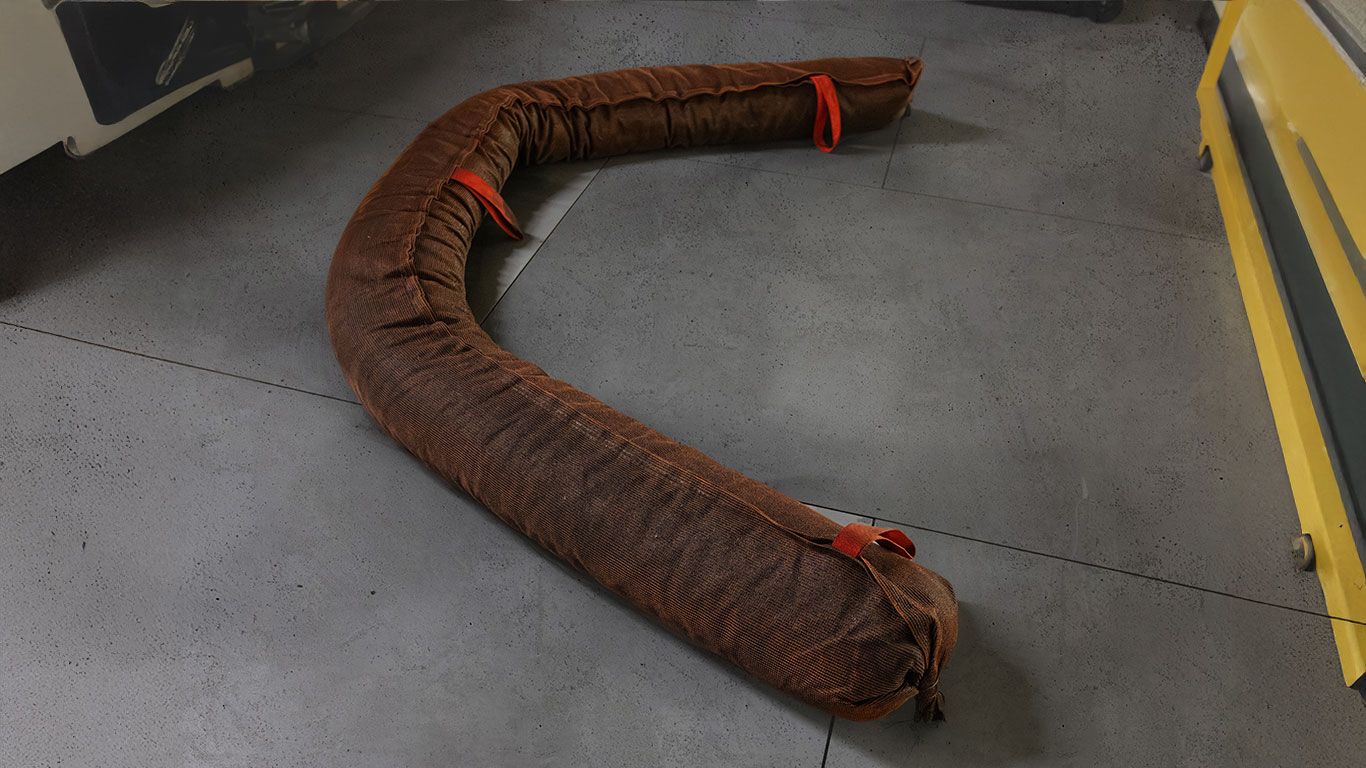
SPL168: Stormtration™ Char21™ Heavy Metal Stormwater Filter Sock (8” x 12’)
Captures sediment, heavy metals and pollutants. Handles heavy runoff up to 72 GPM.
Call 814-822-2004 to order.
Related Articles
When you need it done right. On time. On budget.
Give us a call at 814-822-2004.
